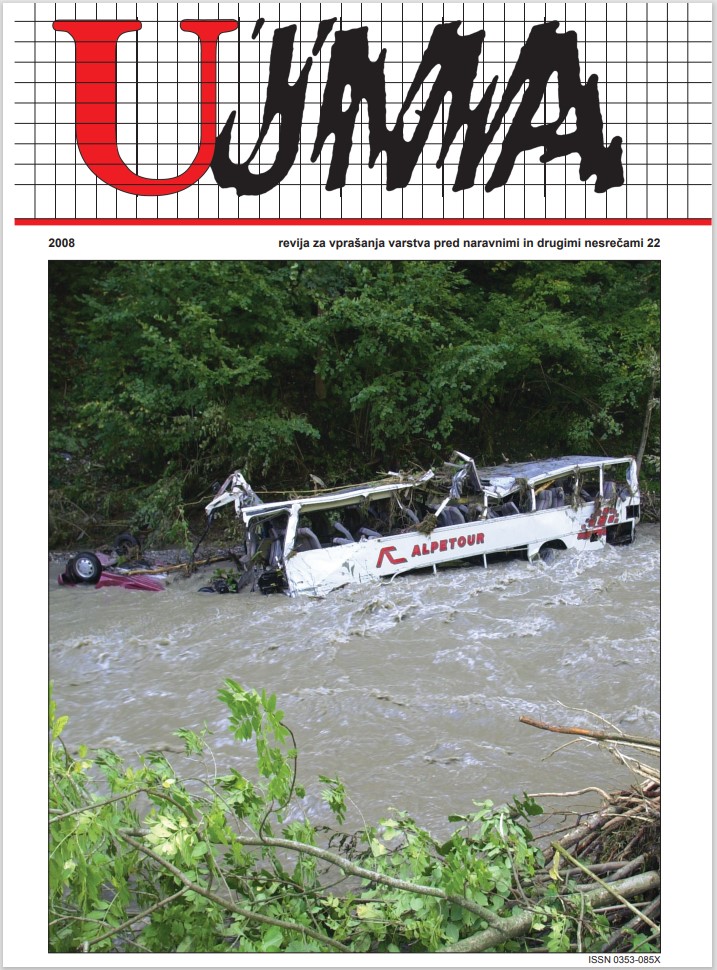THE SIGNIFICANCE OF LOW THRESHOLDS IN HIGH WATERS
Abstract
In the regulation of torrents, numerous structures are used to reduce slope and in this way to reduce the transportation of debris. With low weirs, dams and chutes the slope of the steams above them can be reduced, and in this way the speed and tractive force of the water acting on the riverbed. Consequently there is also a reduction in erosion and the transportation capacity of the stream. Owing to the reduction of slope there are locally, on the actual structures, water energy peaks. For this reason the form and execution of the structure must be such that it enables the dissipation of this energy in the flow of water over it and for the shortest possible distance downstream. Such types of structure are effective generally only in normal discharges, while in the event of high waters in the headwaters erosion processes arise, so the water through its own large transportation capacity creates its own inclination of bottom slope. Thus deposition of sediments often changes dams and chutes into stabilisation ribs. In this way low weirs no longer have an overflow height, so this eliminates their effect of dissipating energy.
References
Rojnik, F. 2003. Načrt inženirske gradnje (PGD, PZI) »Ureditev Selške Sore skozi Železnike — Rekonstrukcija Dolenčevega jezu«. Ljubljana.
Steinman, F. 1999. Hidravlika. UL, FGG, Ljubljana.
Steinman, F. 2003. Hidrotehnika, Vodne zgradbe. UL, FGG, Ljubljana.
Steinman, F. 2008. Recenzija PGD/PZI »Rekonstrukcija Dolenčevega jezu«. Ljubljana.
Downloads
Published
Issue
Section
License

This work is licensed under a Creative Commons Attribution-NonCommercial-NoDerivatives 4.0 International License.
The articles are made available to the public under Creative Commons Attribution-NonCommercial-NoDerivatives 4.0 International (CC BY-NC-ND 4.0).


